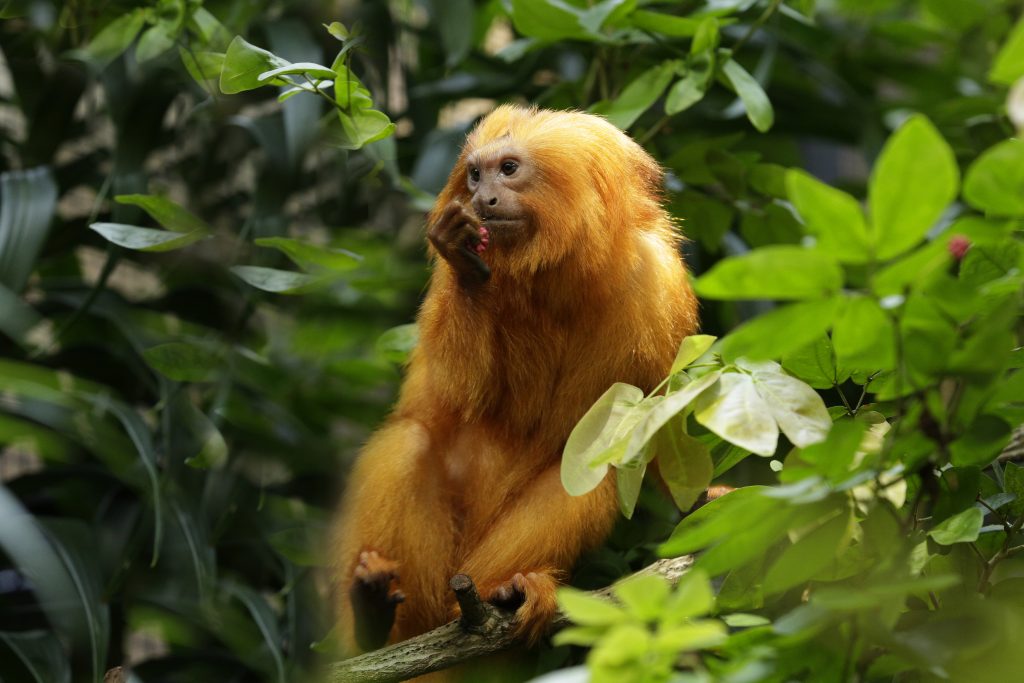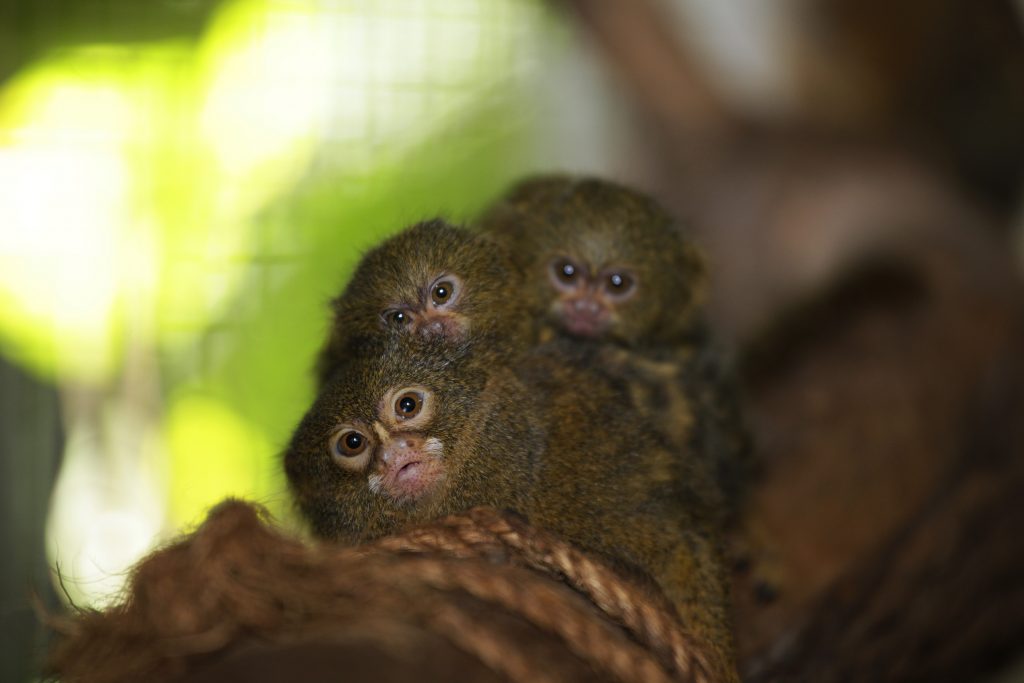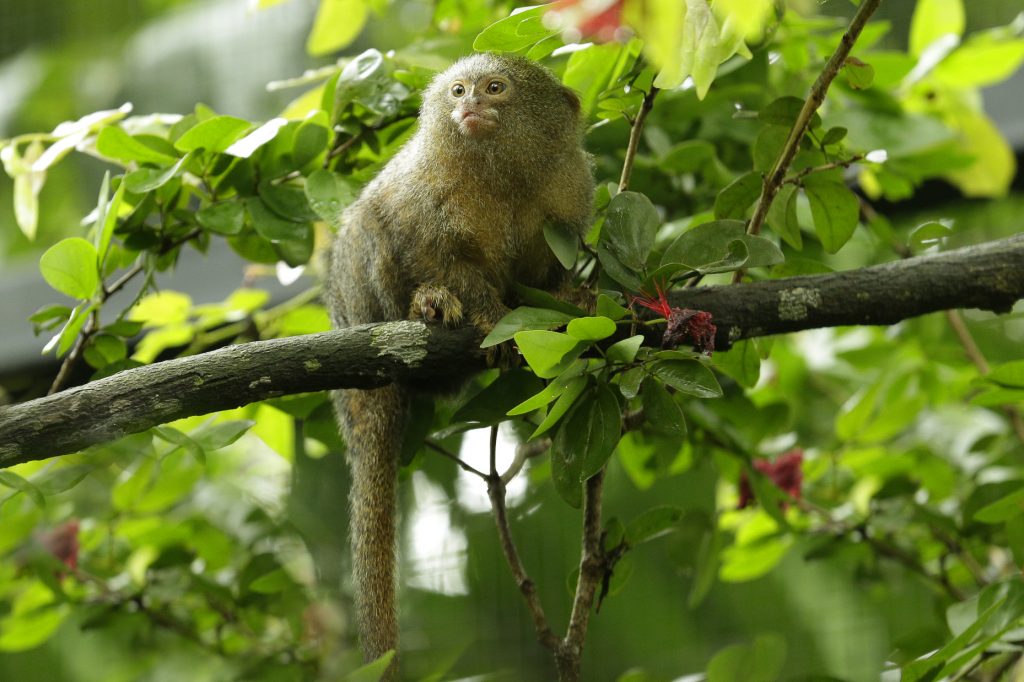
Marmoset wasting syndrome – an interview with Francis Cabana
For this feature, we interviewed Dr. Francis Cabana, Wildlife Nutritionist and Assistant Director, Zoology, Wildlife Reserves Singapore, about a condition which affects callitrichid primates (e.g., marmosets, tamarins) called Marmoset Wasting Syndrome, or MWS. Dr. Cabana and colleagues recently published a study identifying potential risk factors that could be mitigated to help reduce the incidence of MWS, as well as describing some protective steps that callitrichid caretakers can take to reduce or perhaps even prevent its occurrence. During this interview, Dr. Cabana discusses why MWS is such a problem, describes past research efforts, and provides direction on moving forward.
Cabana, Francis, Rina Maguire, Chia-Da Hsu, and Amy Plowman. 2018. “Identification of Possible Nutritional and Stress Risk Factors in the Development of Marmoset Wasting Syndrome.” Zoo Biology 37 (2): 98–106. Available from: https://onlinelibrary.wiley.com/doi/abs/10.1002/zoo.21398
1. The paper we’re highlighting in this feature is about identifying possible risk factors for marmoset wasting syndrome (MWS). Could you describe MWS – what are the symptoms, how is it usually treated, how long between symptom appearance and time of death, and prevalence in zoos and labs?
MWS is an insidious health affliction. By the time you can notice some clinical signs, it may already be too late. The list of symptoms is quite long, and none of them directly relate to MWS so unfortunately a collection of them are usually required to make the call. Most common ones include weight loss, diarrhea, balding at the base of the tail, seeking a heat source and aggressivity during feeding time. Treatment is difficult because we haven’t pinpointed the actual etiology of MWS so they go on a battery of treatments to tackle any possible issue. Anti-inflammatories have had good results, especially to calm the gut. Once symptoms become apparent the animal may have a few days to live unless critical care is administered. Thirty to 40 years ago prevalence in zoos and labs may have been as high as 60%. Our estimates definitely point to a sharp reduction, somewhere around 10%.
2. Which species are primarily affected by MWS? Do analogous conditions affect African or Asian monkeys and apes in human care?
MWS is very targeted to callitrichids. Pied tamarins, common marmosets, silvery marmosets, red-handed tamarins and black-tailed marmosets seem to be particularly sensitive, but most species have known at least one case. Cases involving brown-mantled tamarins, pygmy marmosets, Goeldi’s monkeys and lion tamarins are rarer. Similar conditions affect colobine primates, but this is much less mysterious as it is directly due to inadequate diet and can be prevented
3. Your report states that MWS is multi-factorial – what does this mean? What are some of the factors that have been hypothesized to increase susceptibility to/as origins for MWS?
For ages, research was focused on nutrition with most studies looking at a single parameter like Vitamin E, Vitamin D, protein, calcium, energy etc. But the results were never conclusive, and the symptoms are seemingly random and could be traced back to deficiencies in many different nutrients. The consensus was then decided that it must be multifactorial – until we find anything else. Fiber was only very recently brought up, amidst the gut microbiome research craze. Stress was also something people considered but very difficult to quantify, with the most significant study1 looking at the most subordinate family member which had wasting while all other family members were fine.
4. The results you report focus particularly on stress and nutrition. What are some of the types of stressors that marmosets and tamarins experience in labs and zoos? According to your results, what role does stress play in MWS?
The aim of this study was not to solve MWS but try to find the right direction for us to focus our research efforts. With people focusing on many different things, progress was slow, so with the huge help of the veterinary team and callitrichid keepers at Wildlife Reserves Singapore, we put together a questionnaire aimed at capturing as many facets as possible and with the involvement of 66 zoos and a clever statistical test we had some direction. Stress was a surprise result, which is always exciting. It’s very well known that many callitrichids are easily stressed but what we didn’t know was just how systemic the reaction could be. It seems to affect their gut and perhaps leads to inflammation which has a negative selection on the microflora and leads to impaired absorption of nutrients. This could explain why we see such varied symptoms2 A study on rats showed how stress can weaken the gut’s structural integrity. If this happens in marmosets, tiny bits of food may get through which we know causes an inflammatory reaction, so this is entirely possible, but we don’t have any evidence on this part – yet. Some animals are still more prone than others, is this their temperament, are they more prone to stress? Some are so fragile, like the pied tamarin where just a direct staring contest may give them diarrhea.
5. Dietary deficiencies have been identified as a potential issue in multiple captive species3,4, not just marmosets and tamarins. Can you tell us a little bit about the diet of wild marmosets and tamarins and how it differs from what zoos and sanctuaries currently offer? What are limitations to reducing such dietary inconsistencies? Finally, according to your results, what role does diet play in MWS?
Wild marmosets and tamarins eat insects, some plant parts such as fruit and varying amounts of tree gum5. The species most prone to MWS are the species which eat more gum in the wild (except for the pygmy marmoset for some reason). Labs like to feed monkey pellets, so every nutrient is present and allows for a controlled variable in their studies. This may not be ideal for their natural feeding behaviors or a diversified gut microbiome, but definitely provides the nutrients. Zoo diets have historically been high in fruits and animal protein such as meat, eggs and dairy which led to a number of health issues and offered very little protection against MWS. Slowly these diets are changing to a more naturalistic one of insects, gum Arabic, a mixture of fruit and vegetables or no fruits at all. Our study doesn’t point to nutrients being the instigator of MWS but perhaps it has a protective role—or not, depending on the diet. The fiber found in gum may be extremely beneficial to feed the healthy gut bacteria which may be the most helpful during cases of inflammation. With the absence of these good bacteria, there is nothing to tame a wild inflamed intestine.
6. What are some future directions you would like to see research on MWS go in?
Gut microbiome assays would be very interesting to look at and looking in depth at how stress affects gut health may be the way to go. The time to focus on vitamins and protein is over.


7. Atop current shortages of marmosets for research6 in the U.S., increased use of them across multiple research areas (e.g., aging, Alzheimer’s disease) is anticipated. However, callitrichid colony loss due to MWS has been reported to be between 26-60% in laboratories. What husbandry and management practices do you recommend for reducing these losses as additional colonies are established and current ones expand?
I am no behavioral callitrichid expert, but in my opinion population densities and visual barriers may do wonders to reduce stress. Naturalistic barriers like tufts of leafy branches are great in reducing visually induced stress between callitrichids. Stress caused by territory calling or alarm calls is a whole different story. Lastly, giving a diet of pellets means reducing gut protective health as you are constantly feeding the same ingredients over and over, many of which are wheat and soy. Both of these are not great for gut lining integrity in the long term.
8. Which do you think is more important for reducing the occurrence of MWS in callitrichids in captive environments – the identification and mitigation of risk factors or of protective factors? Why?
I think we need to stop focusing on the visitors’ point-of-view to make a bare exhibit to ensure we can see these animals, and instead provide lush naturalistic enclosures—where they will be more active anyways! Lastly, provide a naturalistic diet of insects and gum and some produce, with limited fruit.
References
1. Johnson EO, Kamilaris TC, Carter S, Calogero AE, Gold PW,Chrousos GP. The behavioral consequences of psychogenicstress in a small social primate (Callithrix jacchus jacchus). Biol Psychiatry. 1996, 40:317–337.Available from: https://doi.org/10.1016/0006-3223(95)00397-5
2. Douay G, Maguire R, Cabana F, Berthet M, Lim ZT, Meredith A. Assessment of the utility of a commercial calprotectin and lactoferrin rapid test in diagnosis of marmoset wasting syndrome. J Zoo Aquar Res. 2019, 7:67-73. Available from: https://doi.org/10.19227/jzar.v7i2.372
3. Fuller G, Lukas KE, Kuhar C, Dennis PM. A retrospective review of mortality in lorises and pottos in North American zoos, 1980-2010. Endanger Species Res. 2014, 23(3):205–17. Available from: http://dx.doi.org/10.3354/esr00568
4. Simpson GM, Fuller G, Lukas KE, Kuhar CW, Fitch-Snyder H, Taylor J, et al. Sources of morbidity in lorises and pottos in North American zoos: A retrospective review, 1980-2010. Zoo Biol. 2018, 37:245–57. Available from: http://dx.doi.org/10.1002/zoo.21429
5. Cabana F, Dierenfeld ES, Wirdateti, Donati G, Nekaris KAI. Exploiting a readily available but hard to digest resource: A review of exudativorous mammals identified thus far and how they cope in captivity. Integr Zool. 2018, 13:94-111. Available from: https://doi.org/10.1111/1749-4877.12264
6. NIH Nonhuman Primate Evaluation and Analysis Part 2: Report of the Expert Panel Forum on Challenges in Assessing Nonhuman Primate Needs and Resources for Biomedical Research (2018). Retrieved May 28, 2019, from https://orip.nih.gov/about-orip/research-highlights/nonhuman-primate-evaluation-and-analysis-part-2-report-expert-panel
